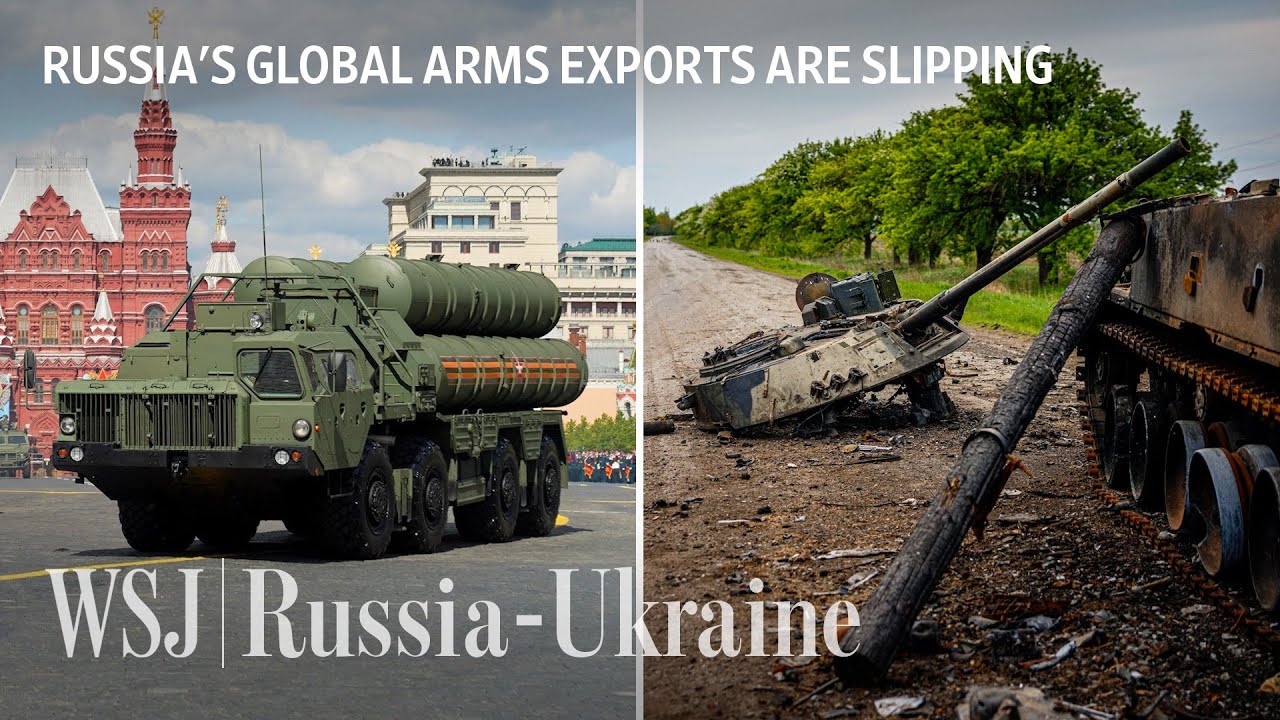How Russia Is Losing Billions In Weapons Sales To The Ukraine War | Wsj
Unleash Your Creative Genius with MuseMind: Your AI-Powered Content Creation Copilot. Try now! 🚀
Every year, Russia celebrates Victory Day by putting its military might on display, commemorating the Soviet Union's victory over Nazi Germany. This choreographed spectacle not only serves as a chance for Moscow to showcase its latest weapons to potential foreign buyers but also as a form of geopolitical outreach for Russia. However, the country's share of the global weapons trade has been declining since 2017, dropping from 22% to 16%. The reputation of its arms industry has also been tarnished by images of destroyed Russian weapons across Ukraine.
Threats to Russia's Position as a Weapons Exporter
The problems for Russia began in 2014 when it annexed Crimea from Ukraine, leading to sanctions that limited the flow of Western components crucial in some Russian weapons. Last year's invasion of Ukraine triggered more economic sanctions and complications for the Kremlin. These challenges have made it harder for countries to buy Russian arms and components and even more difficult to pay for them.
Opportunities for Competitors and Declining Demand
Russia's problems have created opportunities for competitors like France, with Serbia in talks to buy French fighter jets. Additionally, Russia's own need for weapons as its offensive in Ukraine drags on raises questions about how many weapons Moscow has left for export. India, Russia's biggest arms buyer, announced that a major delivery from Moscow wouldn't take place because of the Ukraine War. China, the next biggest customer, has also become less reliant on Russian-made weapons.
Countries like India and China are starting to make more of their own weaponry, which could further weaken demand for Russian equipment. Some analysts argue that it's not necessarily the quality of Russian equipment that's at fault but rather the tactics and people using it. Nevertheless, these difficulties are likely to reduce Moscow's share of the global weapons trade even further.
The Future of Russia's Arms Industry
According to a report by the Stockholm International Peace Research Institute, Russia's arms exports dropped 31% in the five years ending in 2022 compared with the same period ending in 2017. This decline suggests that Russia will continue to fade as a major arms exporter. The future looks problematic on many fronts for the Russian arms industry, raising concerns about its future viability.
In conclusion, Russia faces significant challenges in maintaining its position as a top weapons exporter due to geopolitical tensions and declining demand from key buyers like India and China. These obstacles pose serious threats to the country's arms industry and raise doubts about its

Related Recaps
- Selena Gomez Asks Fans to "Be Kinder" on Social Media | E! News
- Big, Medium and Small Plate Challenge | Funny Challenges by Multi DO Challenge
- AUKUS nuclear submarines will allow Australia to be a ‘force for good’
- "No creo en la desdolarización de la economía, pero va a crecer el papel del yuan"
- How to start customized t-shirt selling business? | New business idea in 2023